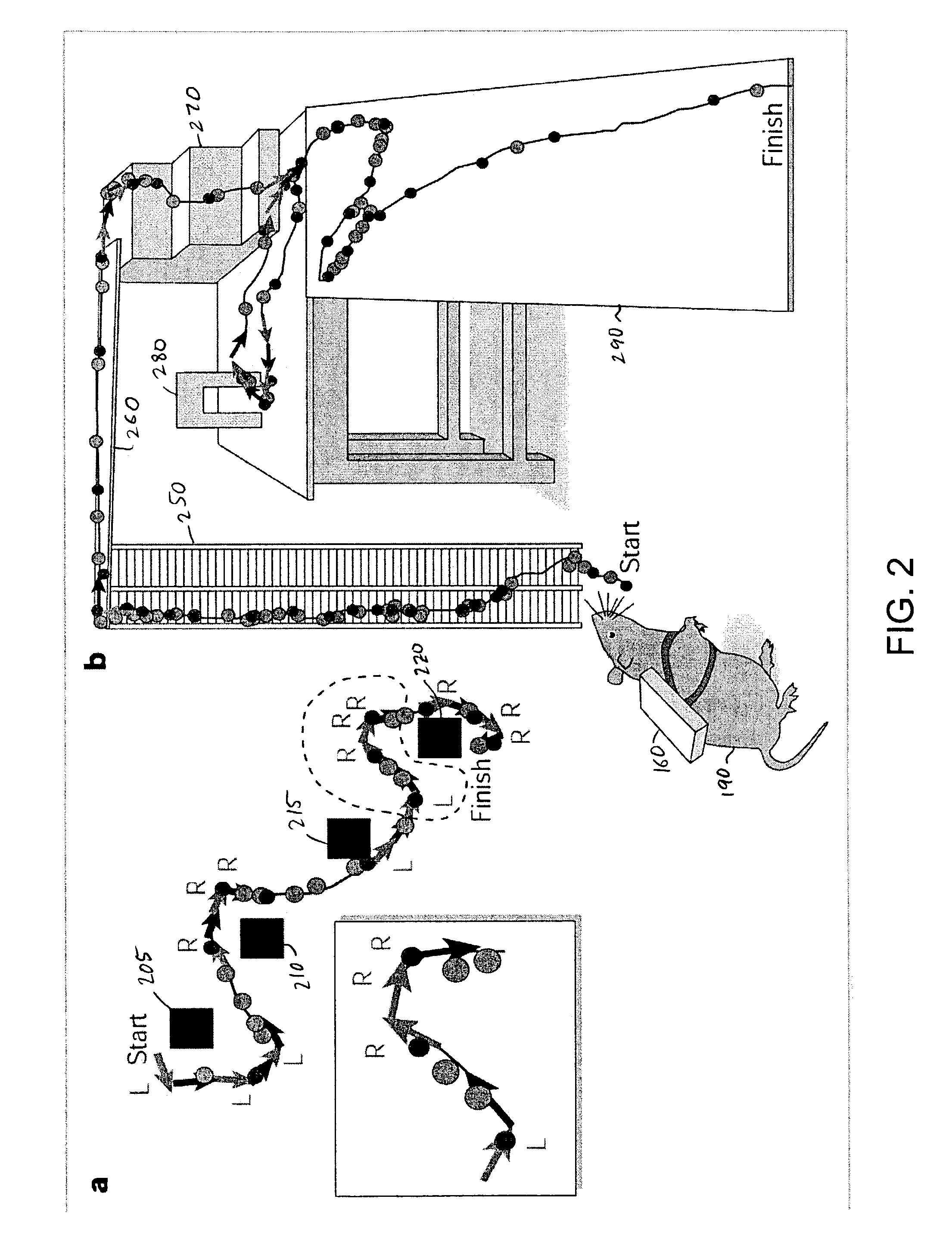Method and apparatus for guiding movement of a freely roaming animal through brain stimulation
a brain stimulation and free-roaming technology, applied in the field of guiding the movement of animals, can solve the problems of limiting the freedom of movement of the subject, affecting the effect of the brain stimulation, distracting the subject's attention, etc., and achieve the effect of inexpensive construction
- Summary
- Abstract
- Description
- Claims
- Application Information
AI Technical Summary
Benefits of technology
Problems solved by technology
Method used
Image
Examples
Embodiment Construction
[0021]By removing physical constraints associated with the delivery of cues and rewards, learning paradigms based on brain microstimulation can enable conditioning approaches that help transcend traditional boundaries in animal learning. Our experiments applied this paradigm to develop a behavioral model in which an experimenter is able to guide distant animals in the manner of intelligent robots.
[0022]FIG. 1 illustrates an overview of a multichannnel telestimulation system showing the main components of the system and the signal flow. In one possible approach, a laptop personal computer 100 receives commands from an operator, e.g., via specific keystrokes, for guiding movement of a freely roaming animal 190, such as a rat. The laptop 100 sends a control signal to a base station 110 via a serial RS232 port 115. An optocoupler 120 processes the signal and provides it to a transmitter 125 as a transistor-transistor logic (TTL) signal. The transmitter 125 transmits the signal via anten...
PUM
 Login to View More
Login to View More Abstract
Description
Claims
Application Information
 Login to View More
Login to View More - R&D
- Intellectual Property
- Life Sciences
- Materials
- Tech Scout
- Unparalleled Data Quality
- Higher Quality Content
- 60% Fewer Hallucinations
Browse by: Latest US Patents, China's latest patents, Technical Efficacy Thesaurus, Application Domain, Technology Topic, Popular Technical Reports.
© 2025 PatSnap. All rights reserved.Legal|Privacy policy|Modern Slavery Act Transparency Statement|Sitemap|About US| Contact US: help@patsnap.com



